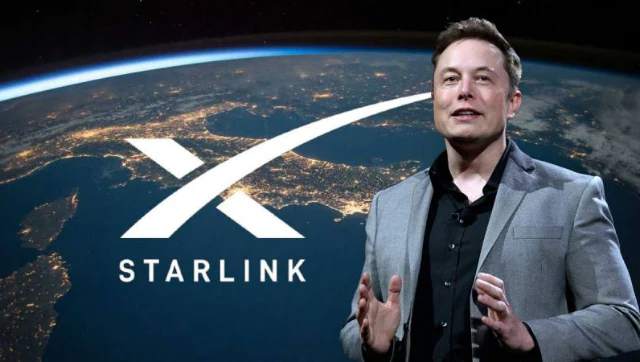Elon Musk’s aerospace company SpaceX has placed an order for one of Twitter’s most expensive advertising packages. Musk just purchased Twitter for $44 billion, and he is now the CEO of the social media company.
According to internal documents from the social media company seen by CNBC, the campaign would advertise the Starlink satellite internet service, which is owned and managed by SpaceX, on Twitter in Spain and Australia.
A Twitter “takeover” refers to the advertising campaign SpaceX is purchasing to advertise Starlink. According to two current and two former Twitter employees who wanted to remain anonymous because they were not allowed to talk on behalf of the business, when a corporation purchases one of these packages, they routinely pay upwards of $250,000 to place their brand at the top of the main Twitter timeline for a whole day.
On the day or days of the anticipated takeover attempt, users should first see three Starlink promotional messages when they open the Twitter app. The recently acquired campaign was planned to run in the next few days, first in Australia and then in Spain.
According to past and present workers, SpaceX has not traditionally acquired significant advertising packages from Twitter.
Starlink uses a network of satellites to provide internet to paying customers, who must also purchase terminals from SpaceX in order to use them.
Starlink was created by SpaceX with the intention of providing high-speed internet access to individuals in areas that are underserved or completely unserviced by cable or fiber-optic infrastructure.
As Russia’s violent invasion destroyed the country’s communications infrastructure, the Starlink service has helped Ukraine’s military and some citizens stay connected.
Although SpaceX contributed to the expense of delivering this service in Ukraine, Musk subsequently complained that his business’s profit margins were damaged by the donation.
The struggle to sell Twitter ads
Along with his duties at SpaceX and Twitter, Musk also serves as the CEO of electric car manufacturer Tesla. He is infamous for bragging that his automaker doesn’t invest any money in conventional forms of advertising including print, radio, television, and internet display advertisements.
Instead, Tesla generates excitement via automobile clubs, fan or shareholder gatherings, blogs, news sites, and social media interaction.
As the “Chief Twit,” or more technically CEO, of Twitter, which is still a significant, global social media network, Musk suddenly finds himself in the situation of having to sell online advertising.
Before Musk’s disputed take-private agreement, Twitter had around 237.8 million monetizable daily active users. Musk wants at least half of Twitter’s income to come from subscribers rather than merely advertisements.
One campaign, especially one as significant as a “takeover,” is insufficient to make up for the many advertisers that recently delayed spending on Twitter or abandoned the service during Musk’s turbulent takeover.
Businesses including General Motors, Audi, Volkswagen, General Mills, Pfizer, United Airlines, and others have temporarily halted their Twitter advertising expenditures in response to an uptick in hate speech and disinformation on the social media network.
Clients of Interpublic Group’s agencies were advised to follow this advice. Around 90% of Twitter’s prior earnings came from advertising.
Musk’s last week’s debut and swift suspension of a premium subscription badge on Twitter further damaged marketers’ confidence in the service. The badge cost customers just $7.99 per month and resembled an earlier verification blue check mark.
Cheaply obtained blue check marks were utilized by imposters and pranksters to broadcast nasty and false remarks while posing as companies, politicians, and celebrities.
On Thursday, one account made in the image of the pharmaceutical giant Eli Lilly created a significant issue when it announced that “insulin is free today.” Before it was removed from Twitter, the trending tweet had been there for at least two hours.
Later, the genuine Eli Lilly account tweeted, “We regret to individuals who have received a false message from a bogus Lilly account.
Despite the fact that major stock indexes were in the green at the time, with the S&P 500 having its largest bounce in two years, Eli Lilly’s stock price fell precipitously after the bogus tweet was published. Sen. Ed Markey (D-Mass.) and the Musk-led firm Tesla were mocked on the site, as were rivals of SpaceX Lockheed Martin, and Sen.
“Twitter generates a tremendous amount of visits to other websites/apps,” Musk remarked in a tweet this past weekend. by far the largest click-driver on the Internet.
Marketing professionals and former Twitter workers quickly corrected the new CEO, and a correction note was appended to his message. Later, he removed the tweet.
He was called out by former Twitter employee Claire Dáz-Ortiz, who wrote: “Lies. I spent five years at Twitter and published two books on social media marketing. Twitter is aware that this is untrue. Since it receives far less traffic than Facebook, LinkedIn, etc., we have never sold it on clicks. Twitter also offers other important advantages. (Marketing is also much more than just clicking.)
Musk warned current Twitter workers that bankruptcy is a possibility last week at a company-wide meeting, citing the company’s loss of advertising and a larger economic slump.
Source and Credits: CNBC

